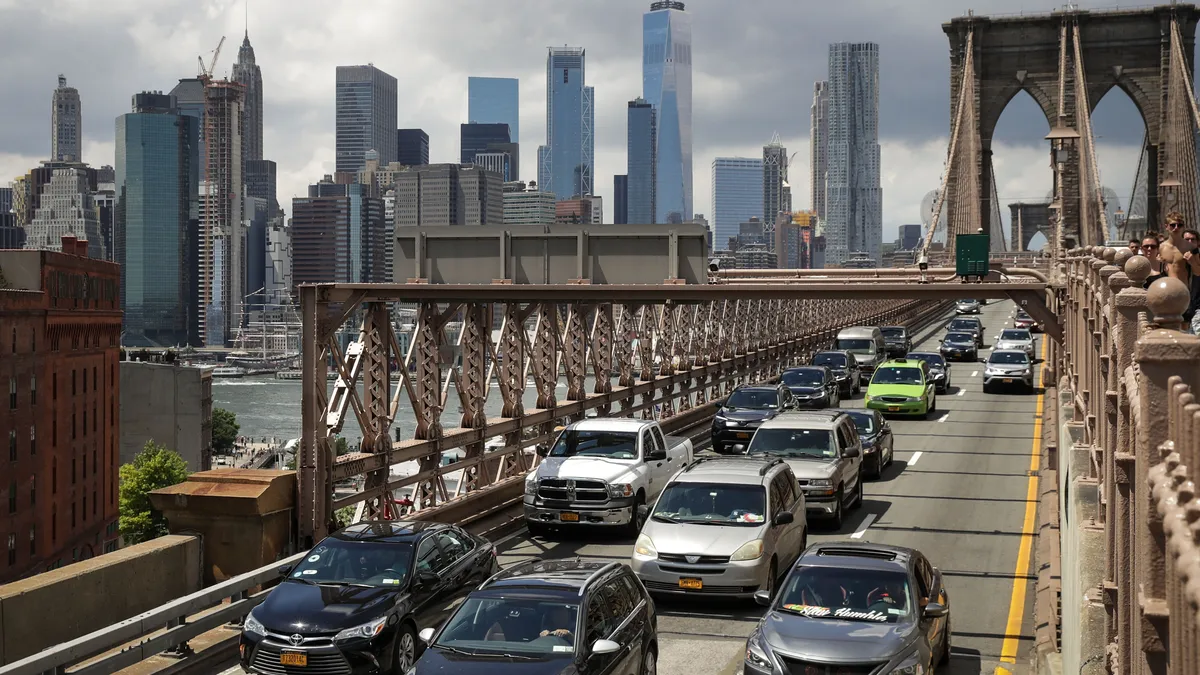Wayne Ting is CEO of micromobility company Lime.
On Monday morning, we awoke to a highly anticipated, but alarming, landmark report. The United Nations’ climate panel issued a “code red for humanity'' stemming from the severe threat of human-caused climate change. The report makes clear that without massive reductions in carbon emissions, we will not meet the critical threshold of keeping global temperatures under 1.5 degrees C of pre-industrial levels — a tipping point that scientists believe is crucial to preventing irreversible damage to our planet. To put it bluntly, man-made actions are bringing Earth to the brink of a climate catastrophe.
If there’s one conclusion to draw from this report, it's that we need to make drastic changes to the way we live and consume immediately. One of the biggest contributors to the global climate crisis is transportation, which makes up 15% to 20% of all carbon emissions globally and 29% of those in the U.S., where the bulk of those emissions stem from cars, trucks and SUVs.
While most of the global policy effort to date has focused on a shift from gas to electric cars, the inconvenient truth is that electrifying cars alone will not solve carbon pollution coming from transportation. This is because cars consume so much energy due to being enormously heavy — the average car weighs over 4,000 pounds. The bulk of the energy used to move these two-ton tanks — frankly, an overkill in machinery when carrying, for example, a 200-pound human — comes from nonrenewable sources. Not to mention the fact that electric cars often require environmentally damaging mining of rare earth minerals for batteries and carbon-intensive manufacturing to produce.
If we’re going to fundamentally address climate change, then we need to have an honest conversation about reducing our reliance on personal cars and trucks. Indeed, the time for half-measures is over. In 2021 alone, we’ve seen catastrophic floods in northern Europe, the second-largest wildfire ever in California, unheard-of 120 degree F weather in Canada, droughts in central Asia — and the list goes on. Without a drastic change to the way we move in our cities, commensurate with the threat we face, our lives and the lives of future generations will be forever altered. This is not a wake-up call; it’s a five-alarm fire.
A number of countries and cities have recognized the urgency of our rapidly warming planet and are taking decisive action. Paris has dramatically reconfigured its streets to reduce car use and allow for human-scaled mobility options like bikes, scooters and mopeds. Barcelona is in the process of repurposing more than 20 miles of street space for people. Italy implemented a subsidy for bike and e-scooter purchases. New York is moving forward with a congestion pricing policy to reduce car trips in busy areas of Manhattan. And cities like Seattle and Washington, D.C., are experimenting with new, car-free travel lanes. These policies are needed on a far greater scale to help reduce fossil fuel consumption and bring down carbon emissions.
But we can’t ask people to drive less without offering affordable, safe and carbon-free transportation alternatives. This is why it’s so critical to invest in the infrastructure that encourages active mobility and gets people back on public transit. It requires cities to reclaim roadways for pedestrians and local businesses. For individuals, it means taking the personal responsibility to drive less.
It also means peeling back hidden public subsidies that encourage driving, like free on-street parking and mandatory parking minimums in newly constructed buildings, and redirecting them to incentivize green mobility.
Inequitable charges on sustainable mobility is an area that demands immediate change. A recent City Observatory study found that Miami's e-scooter fees charged scooter operators 50 times more than car operators on a per-mile basis to travel on city streets. This is not the way to incentivize sustainable transportation.
Starting points for right-sizing fees and subsidies would be to implement congestion pricing for cars and trucks in cities’ most congested areas, as New York City is planning; raising the national gas tax; or even better, implementing a vehicle miles traveled (VMT) tax that can better account for driving in EVs. The resulting revenue could then fund new protected bike lanes, bus lanes and transit improvements.
The urgency of the climate crisis demands that cities evolve from a car-first transportation system to a green transportation future powered by public transit and lightweight electric vehicles. Continuing to rely on cars as a primary means of transportation will keep us on a collision course for irreparable harm to our planet. And as hard as it may seem for some to drive less, frankly, there is no other option if we intend to leave behind a healthy and habitable planet for future generations.
Contributed pieces do not reflect an editorial position by Smart Cities Dive.
Do you have an opinion on a similar issue or another topic Smart Cities Dive is covering? Submit an op-ed.


















